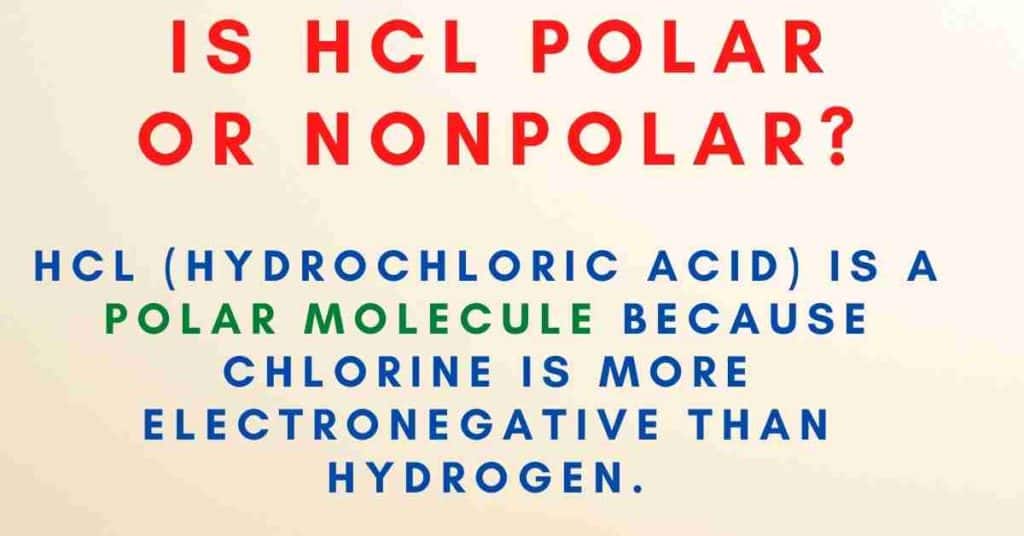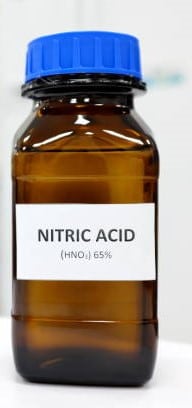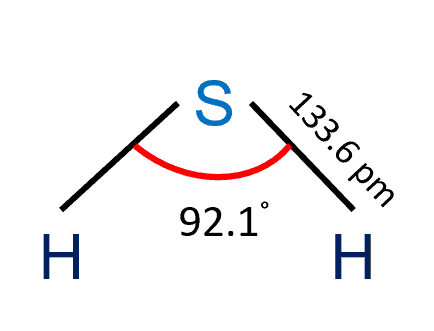HCl (hydrochloric acid) is a polar molecule because chlorine is more electronegative than hydrogen, it pulls the bound electron pair somewhat closer to it and gets a partial negative charge, whereas hydrogen gains a partial positive charge. The dipole moment of HCl is 1.03 D.

Table of Contents
Hydrochloric Acid
Hydrochloric acid is a chemical compound that is made up of inorganic elements. It has a colorless appearance and is used in labs to make aqueous-based solutions.
Hydrochloric acid is a white liquid with a strong odor. It is frequently used in chemistry laboratories at high schools and universities in the form of an aqueous solution.
When present in high quantities, this chemical exists as a liquid and also produces vapors.
Hydrochloric acid has a molecular mass of 36.46 g/mol.
Why is HCl a Polar Molecule?
HCl is made up of two atoms: hydrogen and chlorine. Their electronegativity varies significantly amongst them.
Chlorine has a higher electronegative value than hydrogen.
It is obvious that a more electronegative atom draws the electron bond pair significantly more.
As a result, the chlorine atom acquires a comparatively negative charge and therefore becomes the negative pole, whereas the hydrogen atom acquires a relatively positive charge and thus becomes the positive pole.
Two poles (positive and negative) are formed throughout a molecule in this manner.
Therefore, HCL is a polar molecule.
Hydrochloric Acid Hazards
The eyes, skin, and hydrochloric acid are corrosive to the eyes, skin, and mucous membranes. In humans, acute (short-term) inhalation exposure can cause irritation and inflammation of the eyes, nose, and respiratory tract, as well as pulmonary edoema.
Uses of Hydrogen Chloride (HCl)
Hydrochloric acid has a wide range of applications. It’s utilized in the manufacture of chlorides, fertilizer, and dyes, as well as in electroplating, photography, textiles, and rubber. The eyes, skin, and mucous membranes are all corroded by hydrochloric acid.
More Interesting Links
SiO2 Lewis Structure| Step By Step Construction
Bromine Trifluoride(BrF3)|Bond Angle & Hybridization
N2 Lewis Structure| Hybridization & Molecular Geometry
Hydrogen Bond| Definition & Easy Explanation
H2S Lewis Structure & Molecular Geometry
Is Carbon Dioxide a Pure Substance?
Summary
- The answer to the question ” Is HCL polar or nonpolar?” is that HCL is a polar molecule.
- Hydrochloric acid is a white liquid with a strong odor.
- HCL is utilized in the manufacture of chlorides, fertilizer, and dyes.
Frequently Asked Questions
1. Polar covalent bond?
When the electronegativity of the linked atoms varies, polar molecules arise. Nonpolar molecules are formed when electrons are shared evenly between atoms in a diatomic molecule or when polar bonds in a bigger molecule cancel each other out.
2. What is a hydrogen bond?
A hydrogen bond (H-bond) is a dipole-dipole interaction. It is not an actual chemical bond.
It develops when a hydrogen atom is bonded to a strongly electronegative atom.
(fluorine, nitrogen, or oxygen ) exists in the vicinity of another electronegative atom with a lone pair of electrons.
This type of bond is weaker than an ionic or covalent bond but stronger than van der Waals forces.
3. What is the electronegativity difference?
Electronegativity is defined as an atom’s tendency to attract electrons to itself in a chemical bond.
The greater the difference between atom electronegativity values, the more polar the chemical bond formed between them.
4. Define dipole moments
A dipole moment is simply a measurement of the net polarity of a molecule.
The charge distribution throughout the entire molecule is uneven when polar bonds are unevenly dispersed around the center of a molecule, resulting in a polar molecule.
Ammonia is an example of a polar molecule (Nh3).
The electrons they share are drawn to nitrogen because nitrogen attracts electrons more strongly than hydrogen.
5. CH4 polar or nonpolar?
CH4 is a nonpolar molecule.
CH4 is asymmetric tetrahedral geometrical geometry with four identical C-H bonds. The electronegativity of carbon and hydrogen is 2.55 and 2.2, respectively, resulting in almost zero partial charges.
6. O2 polar or nonpolar?
The molecule O2 is a nonpolar one.
The four electrons that make up the double bond between the oxygen atoms in the O2 molecule are shared equally by both oxygen atoms. There are no partial charges for any element with equal electronegativity.
7. is CO polar?
CO (Carbon monoxide) is a polar molecule because of the electronegativity difference between C(2.55) and O(3.44) atoms. Both atoms have unequal charge distribution, and therefore the CO bond has a net dipole moment, making it a polar molecule.
8. is carbon dioxide polar?
CO2 is nonpolar in nature because there is no uneven sharing of valence electrons.
Because of its linear, symmetrical form, carbon dioxide (CO2) is nonpolar. The electron density is drawn equally from both sides by the two oxygen atoms in either direction of the carbon atom.
9. SO2 polar?
The gas sulfur dioxide (SO2) has a polar character. It’s a polar molecule because of the electronegativity mismatch between the sulfur (2.58) and oxygen (3.44) atoms. SO2 has a bent form due to unbonded electrons on the sulfur and oxygen atoms.
10. what is the gas produced when hydrochloric acid is reacted with ammonium carbonate?
When ammonium carbonate reacts with hydrogen chloride, ammonium chloride, carbon dioxide, and water are produced. As a result, carbon dioxide is generated.
11. What is a polar covalent bond?
A Polar covalent bond is a kind of covalent bond that lies between pure covalent bonds and ionic bonds. Such bonds are formed when the difference in electronegativity between the anion and the cation is between 0.4 and 1.7.
12. Is BF3 polar or nonpolar?
BF3 is a non-polar compound. In BF3, the central boron atom has sp2 hybridized orbitals, resulting in an unfilled p orbital on the Bron atom and trigonal planar molecular geometry. Because the boron-fluorine bonds are all 120 degrees apart, any net dipole in that plane is canceled out. Even if each B-F bond is polar, the net dipole moment is zero because adding the bond vectors cancels everything out.
Check the full article “Is BF3 is polar or nonpolar?”.
More Interesting Topics
- BCl3 Lewis Structure in four simple steps - November 1, 2023
- PH3 Lewis Structure in four simple steps - October 8, 2023
- PF3 Lewis structure in four simple steps - September 24, 2023



